
The Official Supplier for Nuenta
Supplying Nilan systems to Nuenta in the UK
Just when you thought you had your home’s ventilation under control, the addition of Mechanical Ventilation with Heat Recovery (MVHR) paired with cooling capabilities can take your comfort and energy efficiency to the next level. In this guide, you will explore the benefits of integrating cooling into your MVHR system, how it helps you maintain a pleasant indoor climate year-round, and ultimately saves on energy costs. Discover how enhancing your ventilation system can lead to a more comfortable living space while being kind to your wallet and the environment.
Your understanding of MVHR systems can make a significant difference in your home’s air quality and energy efficiency. There are various types of MVHR systems to choose from, each designed for unique needs:
The choice of system directly impacts the performance and adaptability of your home’s ventilation strategy.
The Mechanical Ventilation with Heat Recovery (MVHR) system captures heat from the outgoing stale air and uses it to warm the incoming fresh air. This process improves energy efficiency, enhances indoor air quality, and maintains a comfortable environment while reducing heating costs.
With MVHR combined with passive cooling, the system not only recovers heat but also utilizes natural ventilation techniques to cool the indoor air during warm periods.
MVHR systems equipped with passive cooling functions employ strategic design elements to harness cooler outdoor air. By creating a balanced flow of air, they help reduce indoor temperatures without relying heavily on mechanical cooling methods. This integration promotes an eco-friendly approach, ensuring comfort while lowering energy consumption. Your ability to leverage both heat recovery and passive cooling will maximize your comfort and efficiency year-round.
You should assess several factors when integrating MVHR with cooling in your home. Consider the following aspects:
Thou will find that addressing these elements leads to optimal performance and comfort.
An important aspect of any MVHR system is its energy efficiency rating, which indicates how effectively it uses energy to operate. Look for high ratings, as they not only lower your energy bills but also reduce your environmental impact.
Energy efficiency can vary greatly depending on the climate zone in which you reside. It is crucial to choose an MVHR system that is optimized for your local conditions to achieve the best results in both cooling and heating modes.
With the right system tailored to your climate, you can ensure effective ventilation and thermal comfort throughout the year. For example, in humid regions, a system equipped with dehumidification capabilities can significantly enhance indoor air quality and comfort. Conversely, in cooler areas, prioritizing heat recovery features will maximize energy efficiency, helping you maintain a balanced indoor environment.
Now that you’ve decided to integrate MVHR with cooling, proper installation is vital for maximizing performance. Keep these tips in mind:
Any oversight during installation can impact efficiency and comfort levels.
For the best results, you should place the MVHR unit centrally within your home, avoiding areas with extreme temperatures. This allows for improved airflow and balanced heating and cooling. Positioning it close to commonly used areas can enhance convenience, ensuring maximum performance throughout your living space.
You must plan your ductwork layout carefully to ensure efficient airflow and reduce energy losses. Proper sizing and insulation of ducts are vital to maintain temperature as air travels throughout your home.
Installation of ductwork should involve minimal bends and short runs to optimize air delivery. Insulating exposed ducts can help reduce ambient temperature fluctuations, preserving the performance of your MVHR system. Additionally, using high-quality materials and sealing joints properly will prevent leaks, ensuring that conditioned air reaches its intended destinations efficiently.
After assessing your needs, integrating MVHR with cooling can transform your home’s comfort. Follow this concise guide to ensure a seamless integration:
| Step | Action |
| 1 | Assess current HVAC setup |
| 2 | Choose appropriate cooling unit |
| 3 | Plan ductwork layout |
| 4 | Commence installation |
| 5 | Test system performance |
For a successful integration, evaluate your current HVAC system’s components and performance. Identify any limitations, such as duct size, airflow issues, or inadequate cooling capacity, which may affect the new setup. This analysis helps you make informed decisions about the necessary adjustments and ensure optimal compatibility with MVHR.
Step-by-step, aligning your MVHR with a cooling system involves strategic planning and execution. Begin with a thorough assessment of your current HVAC setup and then proceed to select the right cooling unit that complements your needs.
HVAC integration demands precise attention to detail during installation. Focus on connecting your cooling unit with existing ductwork while ensuring proper placement for maximum efficiency. You might need to modify duct sizes or add insulation to enhance airflow. After installation, conduct thorough performance testing to ensure the system operates effectively and provides the cooling comfort you desire.
Despite some initial investment, MVHR systems with cooling capabilities offer numerous benefits for your home. They not only enhance ventilation by removing stale air but also provide effective cooling during hot weather, ensuring a comfortable indoor environment. This dual function leads to improved air quality and can significantly increase your overall well-being while reducing reliance on traditional air conditioning systems.
If you want to create a more pleasant living space, an MVHR system with cooling can maintain optimal temperatures year-round. This system ensures that your home remains cool during the summer months while effectively managing humidity levels. By providing consistent airflow, you can avoid hot and humid spots, resulting in a more enjoyable atmosphere for you and your family.
Pros of integrating MVHR with cooling include reduced energy consumption. Utilizing this technology helps you achieve a healthier balance between temperature control and energy efficiency.
With MVHR systems, you benefit from heat recovery during colder seasons and cooling during warmer months without the excessive energy bills typically associated with traditional cooling methods. By circulating fresh air while effectively managing indoor temperatures, you’re likely to notice a significant reduction in your energy usage. This not only aids in lowering your utility costs but also contributes to a more sustainable lifestyle by minimizing the overall carbon footprint of your home.
Keep in mind that while MVHR systems with cooling offer numerous benefits, they also come with certain downsides. The complexity of installation and additional components might lead to potential reliability issues. Furthermore, depending on your climate, you may find that energy consumption increases during the cooling process, offsetting some of the efficiency gains. It’s important to weigh these factors against your specific needs before making a decision.
Costs associated with MVHR systems with cooling can be significant, as they typically require higher upfront investment compared to standard systems. The price can vary depending on the size of your home and desired features, and this initial expense might not suit everyone’s budget.
Little do many realize that MVHR systems with cooling require ongoing maintenance to ensure they operate effectively. Regular checks on filters, ductwork, and the cooling components are imperative to maintain air quality and system efficiency.
MVHR systems necessitate consistent upkeep to prevent performance degradation. You should plan for periodic filter replacements and inspections of the cooling elements to ensure optimal operation. Neglecting these maintenance tasks can lead to reduced efficiency, increased energy costs, and even system breakdowns, so establishing a regular maintenance schedule is highly recommended to protect your investment.
To wrap up, incorporating MVHR with cooling into your home’s ventilation system can significantly enhance your comfort while improving energy efficiency. This advanced technology not only maintains optimal temperatures but also ensures good air quality by recycling and filtering indoor air. By adopting this system, you can create a more pleasant living environment while potentially reducing your energy bills. Ultimately, investing in MVHR with cooling is a smart choice for your home that addresses both comfort and sustainability.
 What to Ask When Buying a Nilan Heat Pump?
What to Ask When Buying a Nilan Heat Pump?
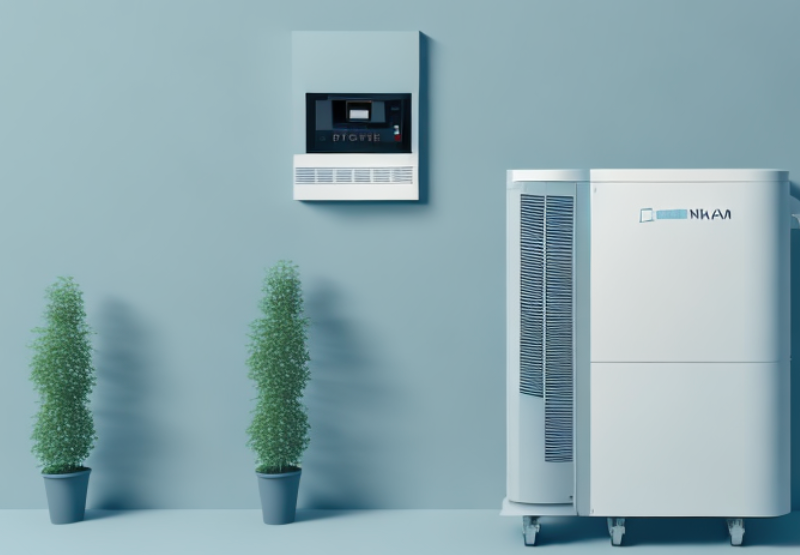 5 reasons why Nilan heat pumps are popular
5 reasons why Nilan heat pumps are popular
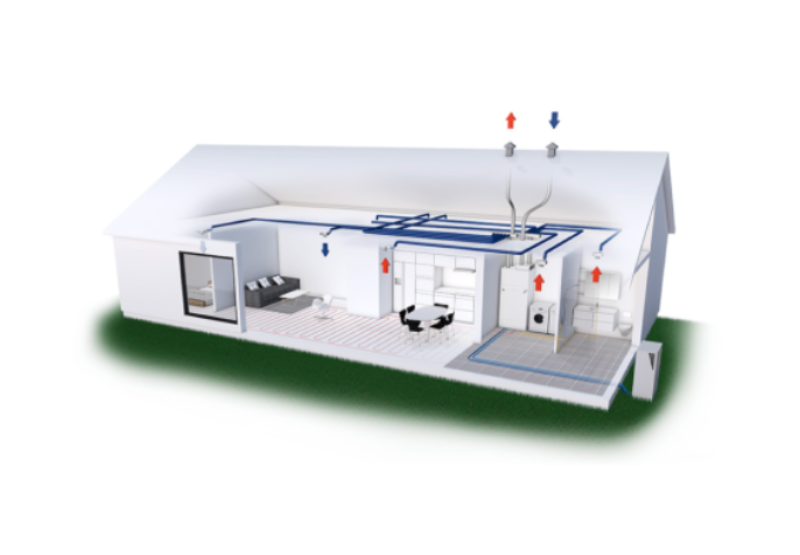 5 Benefits of a Heat Pump – All Explained
5 Benefits of a Heat Pump – All Explained
 Unlocking Energy Savings: Your Guide to Government Incentives and Tax Credits for Renewable Heating
Unlocking Energy Savings: Your Guide to Government Incentives and Tax Credits for Renewable Heating
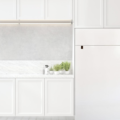 Breathe Easy with Nilan: Your Expert Guide to South East MVHR Systems
Breathe Easy with Nilan: Your Expert Guide to South East MVHR Systems
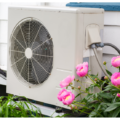 Are Piezoelectric Heat Pumps A Viable Alternative For Heating?
Are Piezoelectric Heat Pumps A Viable Alternative For Heating?
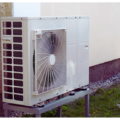 Why Thermionic Heat Pumps Could Be The Next Big Thing In Home Heating?
Why Thermionic Heat Pumps Could Be The Next Big Thing In Home Heating?
 How Do Thermoelectric Heat Pumps Utilize The Seebeck Effect?
How Do Thermoelectric Heat Pumps Utilize The Seebeck Effect?
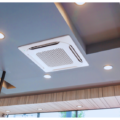 Exploring The Science Behind Mechanical Ventilation With Heat Recovery
Exploring The Science Behind Mechanical Ventilation With Heat Recovery
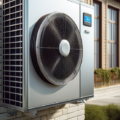 What Makes MVHR A Superior Ventilation Solution?
What Makes MVHR A Superior Ventilation Solution?